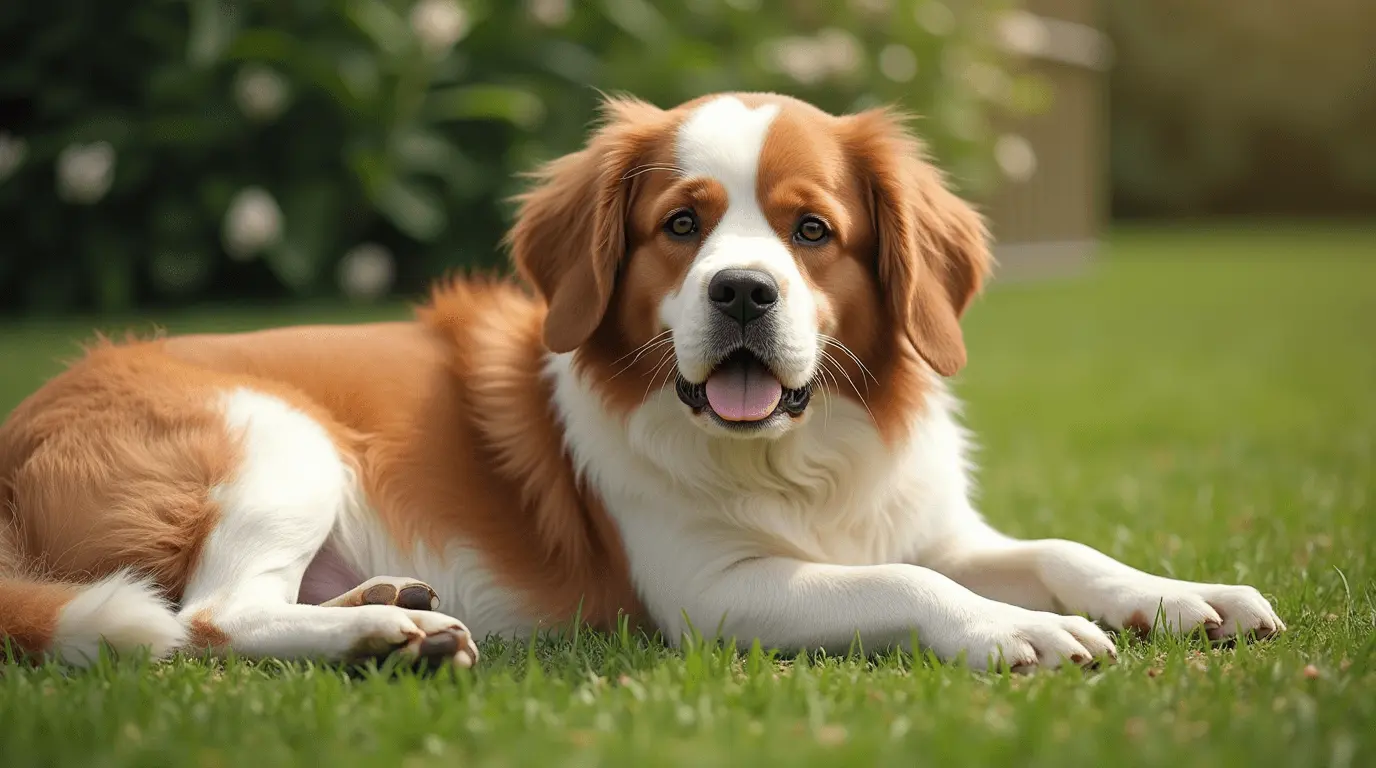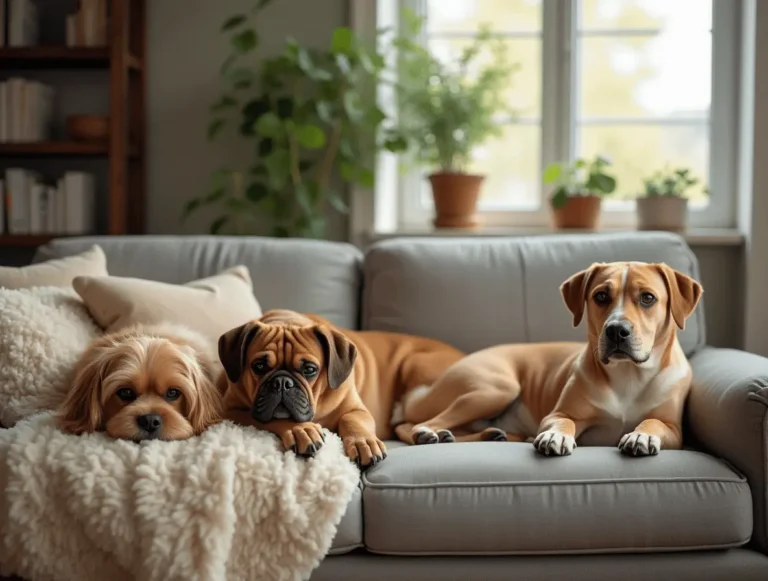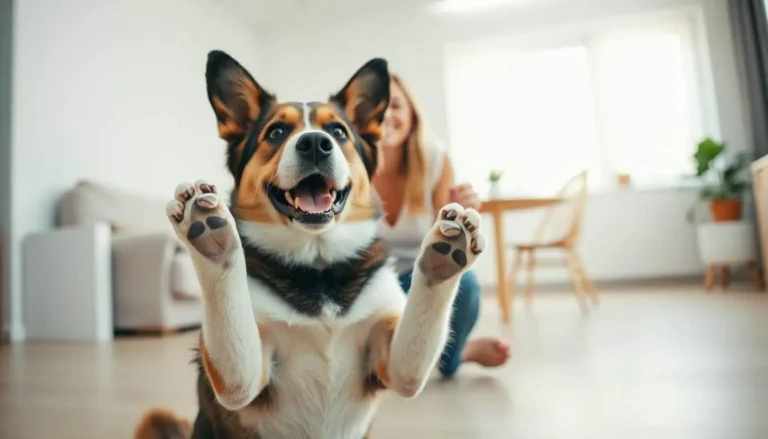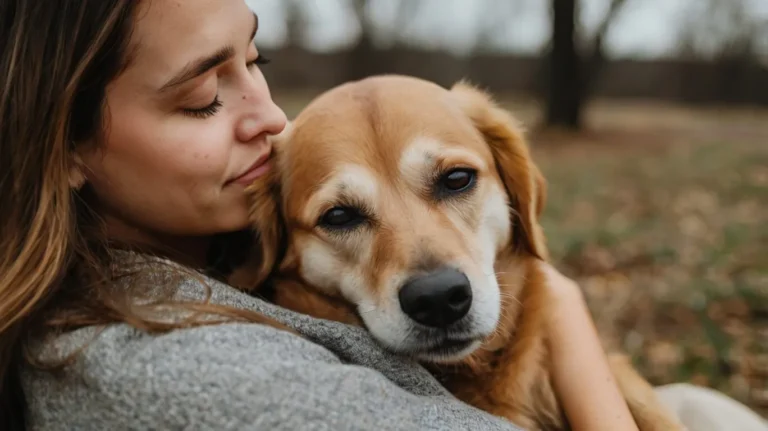12 Lazy Dog Breeds That Are Perfect for First-Time Owners
Bringing a dog into your home for the first time is an exciting and life-changing experience. However, not all dog breeds are equally suited for first-time owners. Some breeds require extensive training, high-energy activities, and constant attention, which can be overwhelming for beginners.
If you’re looking for a loyal companion that’s easy to care for, train, and adapt to your lifestyle, certain dog breeds stand out as the perfect choice. These dogs tend to be low-maintenance, friendly, and adaptable, making them ideal for those new to pet ownership.
In this guide, we’ll explore the best dogs for first-time owners, highlighting breeds that are known for their gentle nature, trainability, and minimal exercise needs. Whether you live in an apartment or a house with a yard, there’s a perfect beginner-friendly dog for you!

Why Choose a Lazy Dog Breed as a First-Time Owner?
Less Exercise Requirements
One of the biggest advantages of choosing a lazy dog breed as a first-time owner is their minimal exercise needs. Unlike high-energy breeds that require constant activity and mental stimulation, these low-energy dogs are content with a few short walks and some indoor playtime.
Perfect for Busy Lifestyles
If you have a demanding job, a hectic schedule, or simply prefer a more relaxed pace of life, a dog with low exercise requirements is a great match. These breeds won’t demand long hikes, vigorous play sessions, or constant mental stimulation. Instead, they are happy lounging on the couch, taking leisurely strolls, and enjoying quiet companionship.
Ideal for Small Living Spaces
Many lazy dog breeds are well-suited for apartment living or homes without large yards. Since they don’t require much space to run around, they adapt well to smaller environments. A short morning and evening walk, combined with some indoor enrichment activities, is usually enough to keep them happy and healthy.
Lower Physical Demand on Owners
First-time dog owners, especially those who are older, have mobility limitations, or prefer a more laid-back lifestyle, will benefit from a breed that doesn’t require intense physical exertion. Some high-energy breeds, like Huskies or Border Collies, need constant activity to stay mentally and physically fit. In contrast, lazy dog breeds like Bulldogs or Basset Hounds are content with minimal exercise, making them much easier to manage.
Ensuring a Healthy Lifestyle
While lazy dog breeds require less exercise, it’s still important to ensure they get some physical activity to maintain a healthy weight and prevent health issues. Short walks, gentle play sessions, and mental stimulation with toys or puzzle feeders can keep them engaged without overexertion. Keeping a balance between rest and light activity will help prevent obesity, which is common in low-energy breeds.
If you’re a first-time owner looking for an easygoing, low-maintenance pet, a lazy breed with low exercise requirements might be the perfect fit for your lifestyle!
Easy to Train & Maintain
For first-time dog owners, choosing a breed that is easy to train and maintain can make the experience of pet ownership much more enjoyable and stress-free. Some dog breeds are naturally more cooperative, eager to please, and require minimal upkeep, making them ideal companions for beginners.
Intelligence and Trainability
Certain breeds are known for their intelligence and ability to learn commands quickly. Breeds like Cavalier King Charles Spaniels, Maltese, and French Bulldogs tend to be highly responsive to positive reinforcement training methods. They enjoy pleasing their owners, making them easier to house-train, teach basic commands, and socialize with other pets and people.
Additionally, dogs that have a calm and patient nature, such as the Bernese Mountain Dog and Basset Hound, are less likely to be stubborn or challenging for novice owners. These breeds adapt well to their owner’s lifestyle and don’t require extensive obedience training to become well-behaved companions.
Minimal Grooming Needs
A dog that is easy to maintain should also have a low-maintenance coat. Some breeds, like the Bulldog and Greyhound, have short coats that require minimal brushing and don’t shed excessively. This makes them perfect for first-time owners who may not be prepared for the commitment of daily brushing, frequent grooming appointments, or dealing with heavy shedding.
On the other hand, while breeds like Shih Tzus and Maltese have longer coats, they can be kept in a shorter “puppy cut” to reduce grooming demands. First-time owners can choose a breed that fits their grooming preferences—whether they prefer a wash-and-go dog or are willing to commit to occasional brushing and grooming sessions.
Low-Maintenance Health & Care
Some dog breeds are prone to health issues that require frequent vet visits, special diets, or intensive care. First-time owners may want to avoid breeds with high medical needs and instead opt for those with a reputation for good overall health.
For example, Greyhounds and French Bulldogs are generally healthy with proper care, while Newfoundlands and Basset Hounds may require more attention to their joints and weight management. Choosing a breed with fewer hereditary health problems will help first-time owners avoid unexpected veterinary costs and complex medical routines.
Balanced Temperament for First-Time Owners
Dogs that are calm, patient, and naturally obedient make training much easier. Highly independent or stubborn breeds might require more advanced training techniques, which could be frustrating for a beginner. Breeds with gentle and affectionate personalities, such as Cavalier King Charles Spaniels and Great Danes, tend to be naturally well-behaved and easy to manage in a home environment.
Final Thoughts
If you’re new to dog ownership, choosing a breed that is easy to train and maintain will ensure a smooth and rewarding experience. Look for breeds that are intelligent, eager to please, and require minimal grooming and healthcare needs. With the right choice, you’ll have a loving, well-behaved companion that fits perfectly into your lifestyle!
Great for Apartments and Small Homes
Living in an apartment or a small home doesn’t mean you can’t have a dog. However, choosing the right breed is crucial to ensuring a happy and comfortable living situation for both you and your furry friend. Many low-energy dog breeds are well-suited for compact spaces because they don’t require a lot of room to roam, are relatively quiet, and are content with short walks and indoor playtime.
Small Size and Adaptability
While small dog breeds naturally fit better in apartments, even some medium and large breeds can thrive in a limited space as long as they have the right temperament. French Bulldogs, Cavalier King Charles Spaniels, and Pugs are excellent examples of small, adaptable breeds that enjoy lounging indoors and don’t need a backyard to stay happy.
Surprisingly, some large breeds like Great Danes and Greyhounds also do well in apartments because of their laid-back personalities. Despite their size, these “gentle giants” tend to be couch potatoes and are content with a few short walks per day.
Low Noise Levels
One challenge of apartment living is dealing with noise restrictions. Some dog breeds are naturally more vocal, barking frequently at outside noises, strangers, or even when they’re left alone. This can be problematic if you have close neighbors or live in a building with strict noise rules.
Breeds like Shih Tzus, Basset Hounds, and Bulldogs are generally quiet and less likely to bark excessively. This makes them great choices for apartment dwellers who want to avoid disturbing their neighbors while still enjoying the companionship of a dog.
Minimal Exercise Needs
Dogs that require constant exercise and stimulation, such as Border Collies or Huskies, are not ideal for small living spaces unless their owner is extremely active. In contrast, lazy dog breeds that prefer lounging around the house need less outdoor activity, making them perfect for apartments.
Breeds like Bulldogs, French Bulldogs, and Maltese are happy with short walks and some indoor play, making them easy to care for even in smaller homes. Basset Hounds and Cavalier King Charles Spaniels also enjoy relaxing indoors and don’t require large yards to burn off energy.
Easy House-Training & Cleanliness
Living in an apartment means house-training is a top priority. Some breeds are easier to train than others and can adapt well to using puppy pads or waiting for scheduled outdoor potty breaks. Maltese and Shih Tzus, for example, are known for being relatively easy to potty train with consistency.
Additionally, breeds with minimal shedding and grooming needs help keep a small living space clean. French Bulldogs, Greyhounds, and Pugs have short coats that don’t shed excessively, reducing the need for constant vacuuming and cleaning.
Final Thoughts
If you live in an apartment or small home, choosing a low-energy, quiet, and adaptable breed will ensure a stress-free living environment. Look for dogs that require minimal exercise, have a calm temperament, and don’t take up too much space. With the right choice, you can enjoy the companionship of a dog without worrying about space limitations!
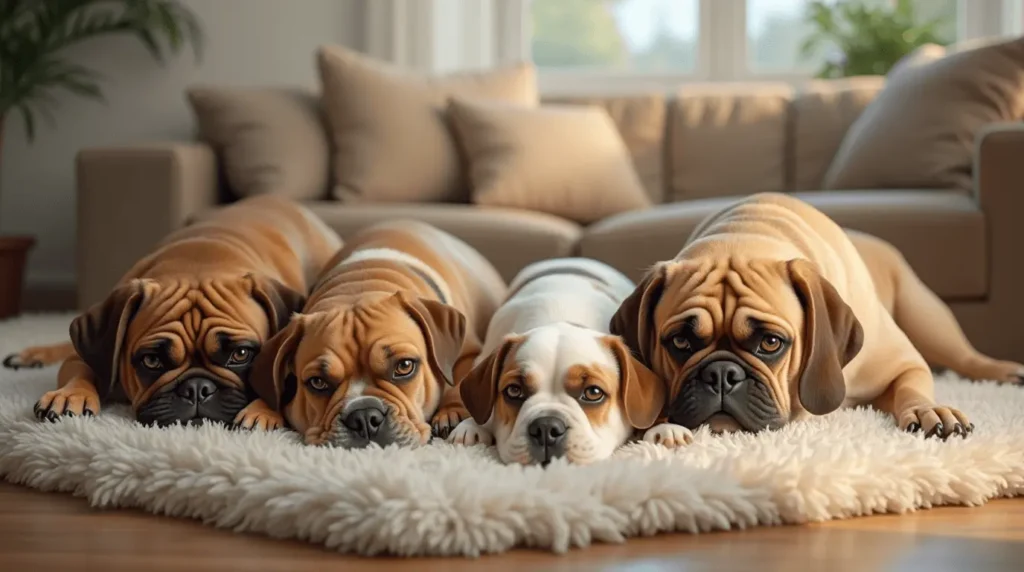
12 Best Lazy Dog Breeds for Beginners
Small Lazy Dog Breeds
- Pug – Playful yet enjoys lounging around. Minimal exercise needed.
- Cavalier King Charles Spaniel – Affectionate and happy with short walks.
- Shih Tzu – Loves relaxing indoors and requires little exercise.
- Maltese – Low-energy, perfect for apartment living.
Medium Lazy Dog Breeds
- Bulldog – Prefers napping over running, great for small homes.
- Basset Hound – Relaxed and easygoing, doesn’t need much exercise.
- Chow Chow – Independent and laid-back, enjoys lounging around.
- French Bulldog – Playful but enjoys resting most of the time.
Large Lazy Dog Breeds
- Great Dane – Surprisingly lazy indoors despite their size.
- Greyhound – Known as “couch potatoes” when not sprinting.
- Bernese Mountain Dog – Gentle giants that love a calm lifestyle.
- Newfoundland – Large but loves relaxing and being affectionate.
Tips for Taking Care of a Low-Energy Dog
Balanced Diet: Keeping Your Lazy Dog Healthy
A balanced diet is essential for any dog, but it’s especially important for lazy dog breeds that are prone to weight gain and related health issues. Since these dogs are naturally low-energy and don’t burn as many calories as active breeds, their diet needs to be carefully managed to prevent obesity and ensure overall well-being.
1. Portion Control & Calorie Management
Lazy dog breeds, such as Bulldogs, Basset Hounds, and Pugs, have slower metabolisms and require fewer calories than high-energy breeds. Overfeeding can quickly lead to weight gain, which increases the risk of joint problems, heart disease, and diabetes.
- Follow the feeding guidelines on your dog’s food packaging, but adjust based on their age, size, and activity level.
- Consider feeding smaller portions throughout the day rather than one large meal to aid digestion and prevent overeating.
- Use a measuring cup or kitchen scale to avoid accidental overfeeding.
2. High-Quality Ingredients for Optimal Health
Not all dog foods are created equal. For low-energy breeds, it’s important to choose high-quality dog food that provides essential nutrients without unnecessary fillers or excessive fats.
Look for:
✅ High-quality protein sources (chicken, turkey, fish, or beef) to maintain muscle mass.
✅ Healthy fats like omega-3 and omega-6 (found in fish oil and flaxseed) to promote skin and coat health.
✅ Fiber-rich carbohydrates (sweet potatoes, brown rice, peas) to aid digestion.
Avoid:
❌ Foods with excessive fillers like corn, wheat, and soy, which provide empty calories.
❌ Artificial additives and preservatives that may cause digestive issues.
❌ Excess fat content, which can lead to obesity in low-energy breeds.
3. Managing Treat Intake
Treats are an essential part of training and bonding, but they can quickly add extra calories if not monitored. Lazy dog breeds don’t burn off treats as quickly as active breeds, making them more susceptible to weight gain.
Healthy treat options include:
- Carrot sticks or apple slices (low-calorie and rich in vitamins)
- Small amounts of lean, cooked chicken or turkey
- Dental chews (help maintain oral health while being a controlled-calorie treat)
💡 Tip: Follow the 90/10 rule—90% of your dog’s diet should come from balanced meals, and no more than 10% should come from treats.
4. Hydration: The Overlooked Essential
Proper hydration is just as important as food. Ensure your dog has access to fresh water at all times to support digestion, kidney function, and overall health. Some lazy breeds, like Bulldogs and Pugs, are prone to overheating, making hydration even more crucial.
💡 Tip: If your dog doesn’t drink enough water, try adding a bit of low-sodium chicken broth to their bowl to encourage hydration.
5. Special Considerations for Certain Breeds
Some lazy breeds have unique dietary needs due to genetics and common health issues:
- Bulldogs & French Bulldogs: Prone to food allergies—opt for limited-ingredient diets with novel proteins.
- Basset Hounds & Dachshunds: Susceptible to joint issues, so glucosamine and chondroitin supplements can help.
- Greyhounds: Have faster metabolisms than most lazy breeds—may require higher protein diets to maintain muscle mass.
Final Thoughts
Feeding your lazy dog a balanced, portion-controlled diet is key to preventing weight gain and ensuring long-term health. Focus on high-quality ingredients, portion control, healthy treats, and proper hydration to keep your furry companion happy and healthy. With the right diet, even the laziest dogs can stay in great shape while enjoying their laid-back lifestyle! 😊🐶
Short, Enjoyable Walks: Keeping Your Lazy Dog Active Without Overexertion
While lazy dog breeds require less exercise than high-energy dogs, they still need regular, moderate physical activity to maintain a healthy weight, support joint health, and prevent boredom. For first-time dog owners, incorporating short, enjoyable walks into their pet’s routine is an easy and effective way to keep their dog happy and in good shape without overexertion.
1. Why Lazy Dogs Still Need Walks
Even though breeds like Bulldogs, Basset Hounds, and Shih Tzus are naturally low-energy, regular walks offer numerous benefits:
✅ Maintains a healthy weight – Prevents obesity, which is common in low-energy breeds.
✅ Supports joint and muscle health – Keeps muscles engaged and reduces stiffness.
✅ Mental stimulation – Allows dogs to explore new scents and environments, preventing boredom.
✅ Aids digestion – Helps prevent bloating and constipation, especially in slower-metabolism breeds.
✅ Strengthens the bond between dog and owner – A great way to connect and reinforce good behavior.
2. How Long Should Walks Be?
Lazy dog breeds don’t require long or intense workouts. Instead, two to three short walks per day (10 to 20 minutes each) are enough to keep them physically and mentally stimulated.
Breed-Specific Walk Duration Suggestions:
🐶 Small lazy breeds (Pug, Cavalier King Charles Spaniel, Shih Tzu): 15-20 minutes per walk
🐶 Medium lazy breeds (Bulldog, Basset Hound, Chow Chow): 20-30 minutes per walk
🐶 Large lazy breeds (Great Dane, Bernese Mountain Dog, Greyhound): 30-40 minutes per walk
💡 Tip: If your dog seems tired or uninterested, break walks into shorter 5-10 minute sessions throughout the day.
3. Choosing the Right Pace & Environment
Lazy breeds often enjoy slow, relaxed walks rather than brisk exercise sessions. Here’s how to make walks enjoyable for them:
✔ Go at their pace – Let them take their time sniffing and exploring.
✔ Choose flat, even terrain – Avoid steep inclines that may strain joints, especially for breeds prone to hip or back issues (e.g., Basset Hounds and Bulldogs).
✔ Walk during cooler times of the day – Many lazy breeds, especially brachycephalic (short-nosed) dogs like French Bulldogs and Pugs, struggle with heat and breathing issues. Early morning or evening walks are best.
✔ Use a comfortable harness – Some breeds, like Bulldogs and Pugs, have delicate airways. A well-fitted harness prevents strain on their neck and promotes better breathing.
4. Fun Ways to Make Walks More Enjoyable
Since some lazy breeds may be stubborn about walking, making walks fun can help keep them engaged.
🎾 Bring a favorite toy – A small ball or squeaky toy can make the walk feel more interactive.
🦴 Use treats for motivation – Carry low-calorie treats to reward your dog for walking nicely.
🐶 Socialize with other dogs – Meeting other dogs along the way can make walks more exciting.
🌳 Explore new routes – Change up the scenery to keep things fresh and mentally stimulating.
5. Alternative Light Exercises for Lazy Dogs
If your dog doesn’t enjoy traditional walks, consider other low-impact activities:
🏠 Indoor playtime – Tug-of-war, gentle fetch, or food puzzle toys.
🌊 Swimming – Ideal for large breeds like Newfoundlands, as it’s easy on the joints.
🐕 Short outdoor adventures – A calm stroll in the park or a pet-friendly café visit.
Final Thoughts
Short, enjoyable walks are a crucial part of a lazy dog’s routine to prevent obesity, promote mental well-being, and strengthen the bond between owner and pet. By keeping walks brief, engaging, and tailored to your dog’s needs, even the laziest breeds can stay active without feeling overwhelmed. With the right approach, daily walks will become a fun and healthy habit for both you and your furry companion! 🚶♂️🐕
Mental Stimulation: Keeping Lazy Dogs Engaged and Happy
Lazy dog breeds may not need intense physical exercise, but that doesn’t mean they should be left to lounge around all day without mental engagement. Mental stimulation is just as important as physical exercise—it helps prevent boredom, anxiety, and destructive behaviors while keeping your dog’s mind sharp and active.
Even low-energy dogs, such as Bulldogs, Basset Hounds, and Cavalier King Charles Spaniels, benefit from brain games, interactive toys, and engaging activities that keep them entertained and happy.
1. Why Mental Stimulation is Important for Lazy Dogs
Many first-time dog owners assume that lazy breeds are happy doing nothing all day. However, even the most laid-back dogs need mental engagement to maintain their well-being.
🐶 Prevents boredom: A bored dog may become destructive, chewing on furniture or barking excessively.
🐶 Reduces anxiety: Dogs left unstimulated can develop anxiety or restlessness, leading to unwanted behaviors.
🐶 Improves problem-solving skills: Engaging activities help dogs stay mentally sharp and learn new things.
🐶 Strengthens the owner-dog bond: Training and interactive games enhance trust and communication.
For lazy dog breeds, the key is finding activities that stimulate their mind without requiring intense physical exertion.
2. Interactive Puzzle Toys & Games
Puzzle toys are one of the best ways to provide mental stimulation with minimal effort. These toys challenge your dog’s problem-solving abilities and keep them engaged for extended periods.
🧩 Top Puzzle Toy Ideas:
- Food-dispensing toys (KONG, treat balls) – Encourages problem-solving while rewarding them with food.
- Snuffle mats – Mimics natural foraging instincts by hiding treats in fabric layers.
- Puzzle boards – Require dogs to slide, lift, or flip compartments to find hidden treats.
- Slow feeder bowls – Turn mealtime into an interactive activity by making dogs work for their food.
💡 Tip: Rotate different puzzle toys to prevent boredom and keep your dog engaged.
3. Obedience & Trick Training
Training isn’t just about teaching basic commands—it’s also a great way to stimulate your dog’s brain. Even lazy breeds enjoy learning simple tricks, and training provides mental engagement without requiring excessive physical effort.
🦴 Training Ideas for Lazy Dogs:
✅ Basic commands – “Sit,” “Stay,” “Come,” and “Leave it” help reinforce good behavior.
✅ Fun tricks – Teaching “Shake,” “Roll Over,” or “Spin” can be rewarding for both the dog and owner.
✅ Name recognition – Training your dog to recognize the names of their toys or family members adds a fun challenge.
💡 Tip: Use positive reinforcement (praise, treats, or affection) to make training sessions enjoyable!
4. Scent & Nose Work Games
Since many lazy breeds, such as Basset Hounds and Bulldogs, have strong noses, scent games provide excellent mental stimulation while keeping them relaxed.
👃 Easy Nose Work Activities:
- Hide-and-seek with treats – Hide treats around the house and encourage your dog to sniff them out.
- Find the favorite toy – Hide your dog’s favorite toy under a blanket or in a box and let them search for it.
- Scent trails – Drag a treat along the floor to create a scent trail for your dog to follow.
These games engage their natural instincts and stimulate their mind without requiring intense movement.
5. Socialization & Enrichment Activities
Mental stimulation doesn’t always require toys—sometimes, new experiences and interactions can provide the engagement lazy dogs need.
🐕 Socialization Ideas:
- Arrange doggy playdates with other calm, friendly dogs.
- Take your dog to a pet-friendly café or outdoor market for a change of scenery.
- Let them meet new people and environments (e.g., a car ride, a trip to the park).
🔄 Change Up the Routine: Even minor changes, such as switching up walking routes or introducing a new chew toy, can add variety to your dog’s day and keep their mind active.
6. Chewing for Mental Relaxation
Chewing isn’t just a physical activity—it also provides mental satisfaction for dogs. Giving your dog appropriate chew items can keep them occupied and mentally engaged while also helping with dental health.
🦴 Best Chew Toys for Lazy Breeds:
- Dental chews – Help clean teeth while satisfying chewing urges.
- Natural chews (bully sticks, yak chews) – Long-lasting and engaging.
- Rubber chew toys – Safe and durable for extended chewing sessions.
💡 Tip: Supervise your dog while chewing to prevent choking hazards.
Final Thoughts
Mental stimulation is just as important as physical exercise—especially for lazy dog breeds that require less physical activity. By incorporating puzzle toys, training, scent games, socialization, and chew activities, you can keep your dog’s mind sharp, prevent boredom, and enhance their overall happiness.
Even the most laid-back dogs need daily mental engagement, so adding a few of these activities to their routine will ensure they remain healthy, happy, and content in their relaxed lifestyle. 🐶💡

Routine Vet Checkups: Ensuring a Long and Healthy Life for Your Lazy Dog
Regular veterinary checkups are essential for all dogs, but they are especially important for lazy dog breeds that may be prone to obesity, joint issues, and breed-specific health concerns. Since low-energy dogs may not show obvious signs of illness, routine vet visits help catch health problems early, ensuring a longer, healthier, and happier life for your furry companion.
Many first-time dog owners may not realize the importance of preventive healthcare, but consistent vet visits can save money in the long run by addressing potential issues before they become serious medical conditions.
1. How Often Should Lazy Dog Breeds Visit the Vet?
The frequency of vet checkups depends on your dog’s age, breed, and overall health.
✅ Puppies (0-1 year): Every 3-4 weeks until all vaccinations are completed (usually around 4 months old), then once every 6 months for wellness checks.
✅ Adult Dogs (1-7 years): At least once a year for a full physical exam, vaccinations, and general health assessment.
✅ Senior Dogs (7+ years): Twice a year, as older dogs are more prone to conditions like arthritis, obesity, and organ-related diseases.
💡 Tip: Even if your lazy dog seems healthy, annual checkups are essential for early detection of silent health issues like heart disease or joint deterioration.
2. What Happens During a Routine Vet Checkup?
A comprehensive vet visit includes several key assessments to ensure your dog is in top shape.
🩺 Physical Examination
The vet will check your dog’s:
- Weight and body condition – To ensure they are not overweight or underweight.
- Skin and coat health – Looking for signs of allergies, infections, or parasites.
- Teeth and gums – Dental health issues can lead to infections affecting major organs.
- Ears and eyes – Checking for infections, discharge, or vision issues.
- Heart and lungs – Detecting potential cardiovascular or respiratory problems.
- Joints and mobility – Assessing signs of arthritis, hip dysplasia, or other mobility concerns.
💡 Tip: If your dog is overweight, ask the vet for a personalized diet and exercise plan to help them maintain a healthy weight.
3. Preventive Care: Vaccinations, Parasite Control & Dental Health
Preventative treatments are crucial for keeping your lazy dog safe from common health risks.
💉 Vaccinations:
Core vaccinations protect against serious diseases such as:
- Rabies
- Distemper
- Parvovirus
- Canine Hepatitis
Non-core vaccines (depending on your location and lifestyle) may include:
- Bordetella (Kennel Cough) – If your dog goes to groomers, dog parks, or daycare.
- Leptospirosis – Protects against bacteria found in contaminated water or soil.
🐜 Flea, Tick & Heartworm Prevention:
Lazy dog breeds that spend more time indoors may still be at risk for fleas, ticks, and heartworms. Preventative medication is recommended year-round to protect against parasites that can cause severe health problems.
🦷 Dental Health:
Dental disease is one of the most common but preventable issues in dogs. During checkups, vets check for plaque buildup, gum infections, and broken teeth.
✅ Regular dental cleanings may be recommended for certain breeds prone to dental issues (e.g., Shih Tzus, Pugs).
✅ At-home brushing and dental chews can reduce tartar buildup and keep your dog’s breath fresh.
💡 Tip: Small breeds and brachycephalic (flat-faced) dogs are at a higher risk of dental disease, so they may require more frequent dental care.
4. Common Health Issues in Lazy Dog Breeds
Since low-energy dogs are prone to certain breed-specific health conditions, routine checkups allow for early detection and treatment.
🔎 Health Concerns in Lazy Breeds:
- Obesity – Due to low activity levels, weight gain can lead to heart disease, diabetes, and joint problems.
- Joint & Bone Issues – Bulldogs, Dachshunds, and Basset Hounds are prone to hip dysplasia and arthritis.
- Respiratory Issues – Brachycephalic breeds (French Bulldogs, Pugs, Shih Tzus) often have breathing difficulties.
- Skin & Allergy Problems – Bulldogs and Basset Hounds are more likely to have skin folds that require extra care.
- Heart Disease – Some lazy breeds, like Cavalier King Charles Spaniels, are predisposed to heart conditions.
💡 Tip: If your vet identifies a potential risk, they may recommend special diets, supplements, or medication to manage your dog’s health.
5. Questions to Ask Your Vet
It’s always a good idea to prepare questions for your vet during checkups to ensure you’re taking the best possible care of your dog.
📝 Important Questions to Ask:
✔ Is my dog’s weight healthy for their breed and size?
✔ What is the best diet for my dog’s energy level and age?
✔ How can I improve my dog’s dental health?
✔ Are there any breed-specific health concerns I should watch for?
✔ What preventive care (vaccines, flea/tick medication) does my dog need?
✔ Are there any supplements that could benefit my dog (e.g., glucosamine for joints)?
💡 Tip: Keep a health journal for your dog, noting any changes in appetite, behavior, energy levels, or mobility, and share these with your vet.
6. Early Detection Saves Lives
Many diseases and health conditions don’t show obvious symptoms until they have progressed. Routine checkups allow vets to detect and treat problems early, which can significantly increase your dog’s lifespan and improve their quality of life.
⚠ Signs Your Dog May Need an Urgent Vet Visit:
🚨 Sudden weight gain or loss
🚨 Difficulty breathing or excessive coughing
🚨 Loss of appetite or extreme lethargy
🚨 Limping, stiffness, or trouble standing up
🚨 Vomiting or diarrhea that lasts more than 24 hours
🚨 Unusual lumps, bumps, or changes in skin condition
If you notice any of these symptoms, don’t wait for the next routine visit—schedule a vet appointment immediately.
Final Thoughts
Routine vet checkups are one of the most important aspects of responsible dog ownership, especially for lazy breeds that may develop weight or joint issues over time. By keeping up with yearly exams, vaccinations, dental care, and early screenings, you can help ensure your dog stays healthy, happy, and by your side for many years. 🐶❤️
👉 Remember: Even the laziest dogs deserve top-notch care, and regular vet visits are the key to a long and comfortable life! 🚑🐾
Conclusion
Lazy dog breeds are great for first-time owners due to their low energy, manageable care needs, and calm personalities. They offer a fantastic introduction to dog ownership without the stress of high energy demands or complicated training regimens. By choosing a lazy breed, first-time dog owners can enjoy a more relaxed lifestyle while learning the ins and outs of being a responsible pet parent. Whether it’s a short walk, cuddle session, or relaxing day indoors, these dogs make the perfect companions for those looking for a low-maintenance and loving addition to their home. 🐕💖

